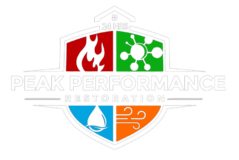Water damage is a common yet often underestimated issue that can have severe consequences if not addressed promptly. Whether caused by a burst pipe, a leaky roof, or flooding, water damage can lead to structural problems, health hazards, and significant financial losses. Understanding the dangers of ignoring water damage and knowing how to address it immediately can save homeowners and businesses from long-term headaches.
The Hidden Dangers of Water Damage
- Structural Damage
Water can weaken the structural integrity of a building over time. When water infiltrates wood, drywall, and other materials, it can cause them to warp, rot, or deteriorate. This not only compromises the stability of the structure but can also lead to costly repairs. For example, wooden beams may lose their strength, and drywall may crumble, creating unsafe conditions. - Mold Growth and Health Risks
One of the most insidious consequences of water damage is mold growth. Mold thrives in damp environments and can begin to grow within 24 to 48 hours of water exposure. Mold not only damages the materials it grows on, but it can also pose significant health risks. Exposure to mold can cause respiratory problems, allergic reactions, and other health issues, particularly in individuals with compromised immune systems, asthma, or allergies. - Electrical Hazards
Water and electricity are a dangerous combination. If water damage affects electrical outlets, wiring, or appliances, it can create a risk of electric shock or fire. Even a small amount of water can cause electrical components to short-circuit, leading to potentially life-threatening situations. - Decreased Property Value
Ignoring water damage can lead to a decrease in property value. Potential buyers are often wary of properties with a history of water damage, even if the damage has been repaired. If left unaddressed, water damage can result in long-term problems that are difficult and expensive to fix, further reducing the property’s marketability. - Pest Infestations
Standing water and damp conditions attract pests such as termites, ants, and rodents. These pests can cause additional damage to a property, particularly if they go unnoticed for an extended period. For example, termites can quickly eat through wooden structures, leading to significant damage that may require extensive repairs.
How to Address Water Damage Immediately
- Identify the Source
The first step in addressing water damage is to identify and stop the source of the water. This could involve shutting off the main water supply, repairing a leak, or diverting water away from the property. It’s crucial to act quickly to prevent further water infiltration. - Remove Standing Water
Once the source is under control, the next step is to remove any standing water. Depending on the severity of the water damage, this may require the use of pumps, wet/dry vacuums, or professional water extraction services. Removing water quickly helps prevent further damage and reduces the risk of mold growth. - Dry and Dehumidify
After removing the water, it’s essential to thoroughly dry the affected areas. This can be done using fans, dehumidifiers, and proper ventilation. The goal is to reduce humidity levels and ensure that all materials, including floors, walls, and furniture, are completely dry. Professional restoration services often use specialized equipment to achieve this. - Inspect for Mold and Mildew
Even after drying, it’s important to inspect the area for mold and mildew. If mold is found, it must be addressed immediately by a professional. Mold removal typically involves cleaning or replacing affected materials and using antimicrobial treatments to prevent future growth. - Repair and Restore
Once the area is dry and free of mold, the next step is to repair and restore the damaged property. This may involve replacing drywall, flooring, and insulation, as well as repainting and refinishing affected surfaces. It’s also a good idea to conduct a thorough inspection to ensure that all damage has been addressed. - Prevent Future Water Damage
Finally, take steps to prevent future water damage. This can include regular maintenance of plumbing systems, inspecting the roof for leaks, ensuring proper drainage around the property, and installing sump pumps or other water mitigation systems.
Water Damage Needs to be Taken Seriously
Water damage is a serious issue that should never be ignored. The longer it goes unaddressed, the more severe and costly the consequences can become. By taking immediate action to identify, remove, and repair water damage, homeowners and businesses can protect their property, health, and financial well-being. Don’t wait until it’s too late—address water damage as soon as it happens to avoid the dangers it can bring.

